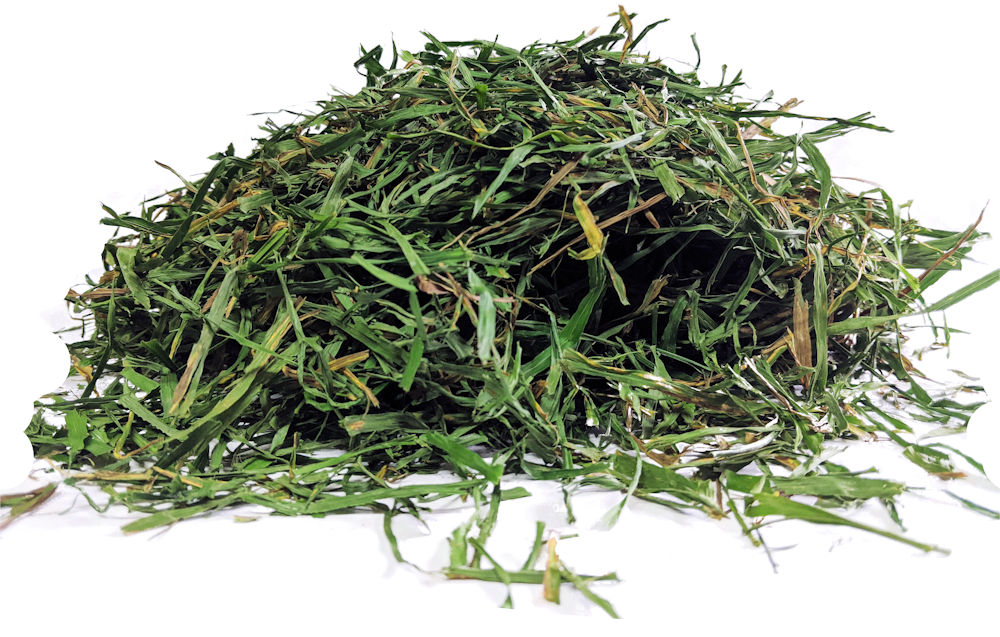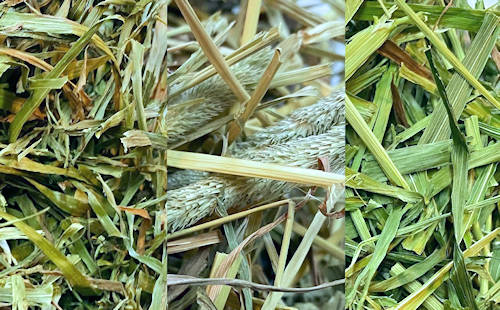What the Cut??

If you’ve spent any time on our website recently, you’ll have seen a whole heap of different hays and grasses. This can be a little confusing - and also a little daunting!! There are timothy hays, meadow hays, hays with bits added, oat hays, aromatic hays, wheat hays, grasses …and more! SO many to choose from.
And then there’s the cut....1st cut, 2nd cut ..... Whaaat??
What’s the difference - and, more importantly, which are the best ones to feed??
We’ll answer the second question first - we get asked this most often, and the answer is easy. The hays or grasses you should be feeding your little ones are simply the ones they enjoy the most! We’d recommend finding three or four they enjoy, and mix them up - either together, or by feeding alternatively, so they don’t ‘fixate’ on one type. The need for hay with rabbits and other small animals is for both dental wear and gut health, and it’s the volume of hay consumed that achieves this most effectively, not the specific hay type.
Plus, whilst it’s not been scientifically proven, we feel a variety of different textures helps to achieve a good all-round dental wear.
But what about the cut?
The ‘cut’ refers to the number of harvests taken within one growing season/year of a particular crop. There can be a 1st, 2nd, 3rd and, extremely rarely, a 4th cut. Each cut has specific characteristics, but these characteristics are dependent on how early in the season the cut has been taken, and the weather during key growth stages of the crop. Nothing is a given in the world of hay!
Whilst there are general characteristics of each of these cuts, the lines between them can be a little ‘blurred’, and these characteristics can be very different from year to year. A 1st cut one year can be leafy and thin stemmed, and the same field then produce a brittle, broad and chunky stemmed hay the year after.
Talk about complicated!! You can see why we suggest calling in advance of placing your order for an accurate description of current stock if your little ones have a very specific requirement!

Cut Detail
As a general rule, each of the cuts can have the following general characteristics:
1st Cut: Generally a lovely mix of stem, leaf and young seedhead. If the weather has been good earlier in the year, this cut can be taken whilst the seedhead is still young, and stem tender. The colour may be lighter green, or if field dried, a light yellow colour. If an early cut, this is a nutritious hay and great for those who like a bit of everything! But if the weather’s not been good for plant growth, this 1st cut may need to be taken later in the year. This has two consequences; firstly, the hay will be generally coarser and boarder stemmed, with fewer leaves and seedheads. And second, depending on how late in the year the cut is taken, it means it’s highly unlikely there will even be a 2nd cut - let alone a 3rd!
2nd Cut: This cut generally has a little more protein in than the 1st cut, and whilst still a mix of stem, leaf and seedhead, the leaves may be a little more prominent.
3rd/4th Cut: These two cuts are the ‘holy grail’ of hays for some bunnies! High in protein, rich green leafy hays, with minimal stem and no seed heads. Soft, tasty and really yum! Usually harvested at the end of the season, and only when Mother Nature has been really kind.
Four Legged Consumers!
Whilst most rabbits would fight their way though a crowd to be first in the queue for a box of this very special 3rd/4th cut hay, some rabbits just can’t see what the fuss is all about; these rabbits much prefer a bit of 'bite' to their hay and love a 1st cut, so do take a sample before committing to the soft 3rd/4th cuts - and as they are high in protein, always introduce 3rd/4th cuts slowly, just as you would with a new food or fresh grass for the first time. We’d recommend feeding alongside other hays to ensure a good variety.
We find 3rd/4th cuts to be particularly beneficial to those dentally challenged, elderly or recovering for illness/surgery as the 3rd cut is easy to eat and aromatic.
So whatever your little ones like, there’s sure to be a cut, type or ‘flavour’ of hay your little ones will enjoy - just get in touch for some expert advice if your little ones don’t yet have the hay habit!

